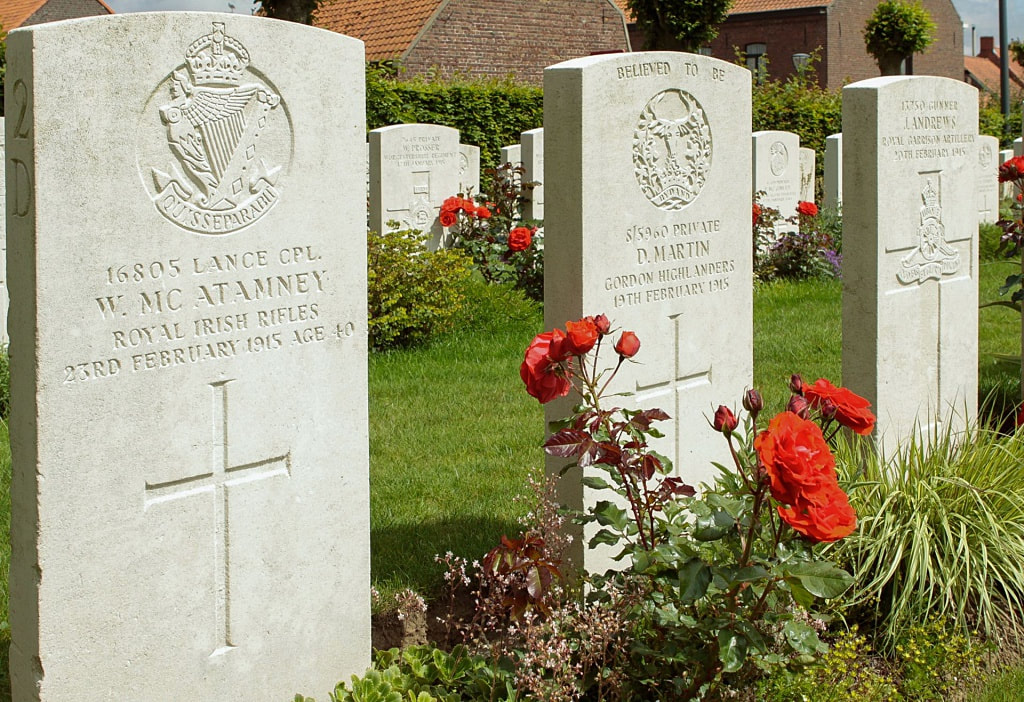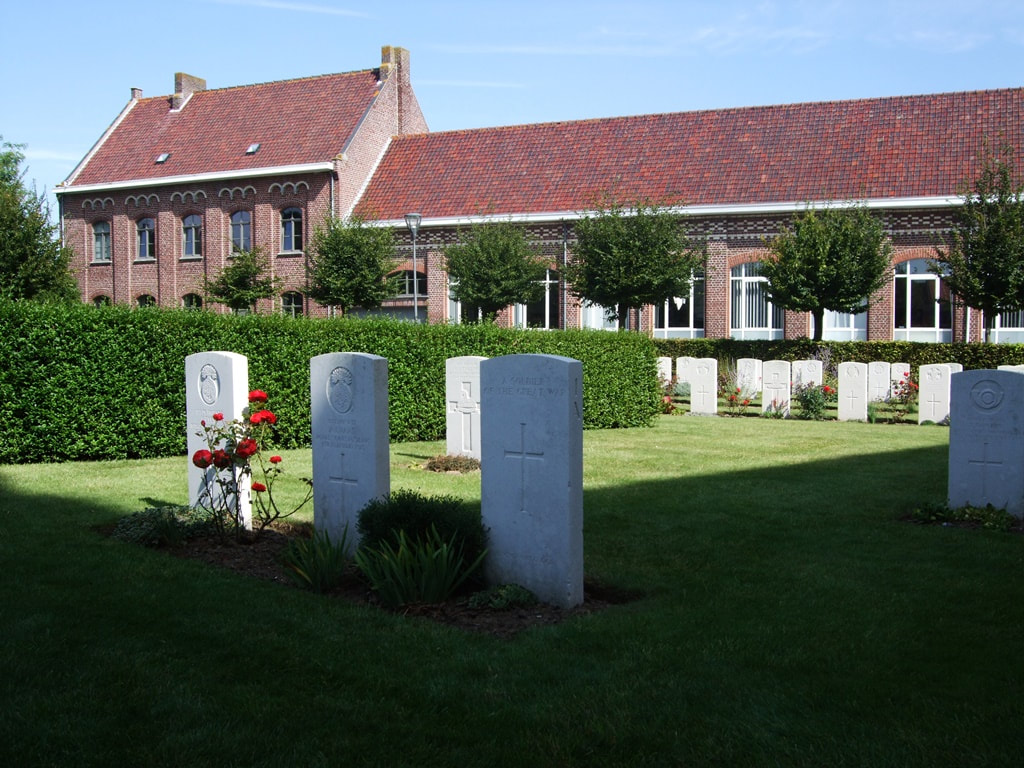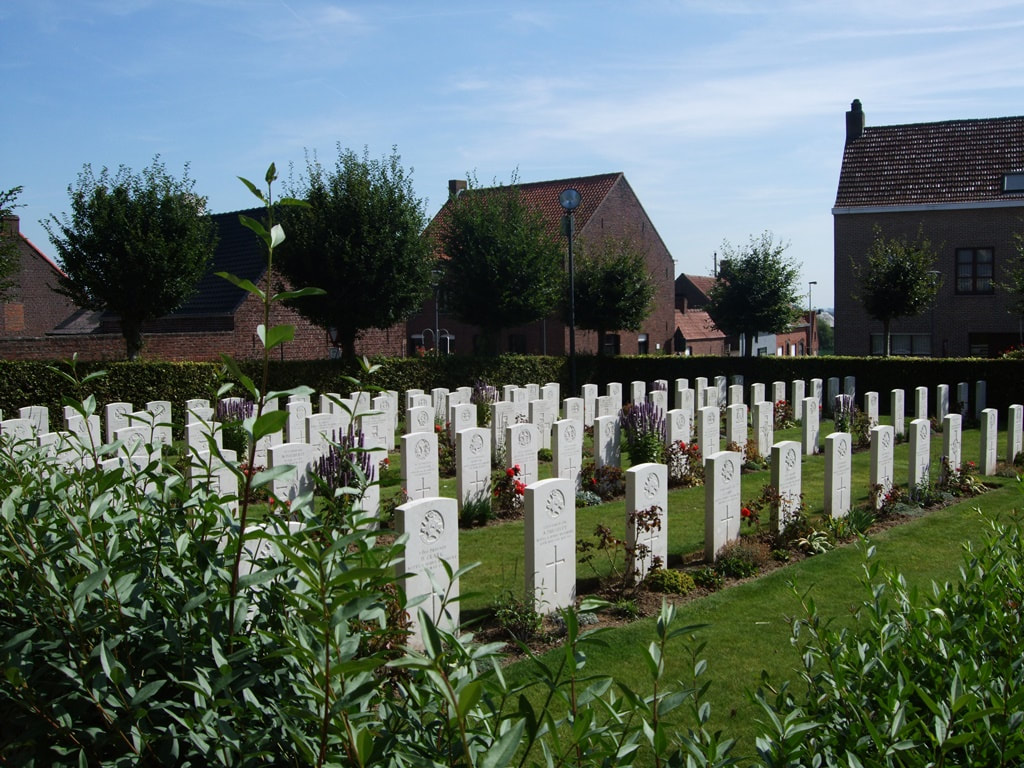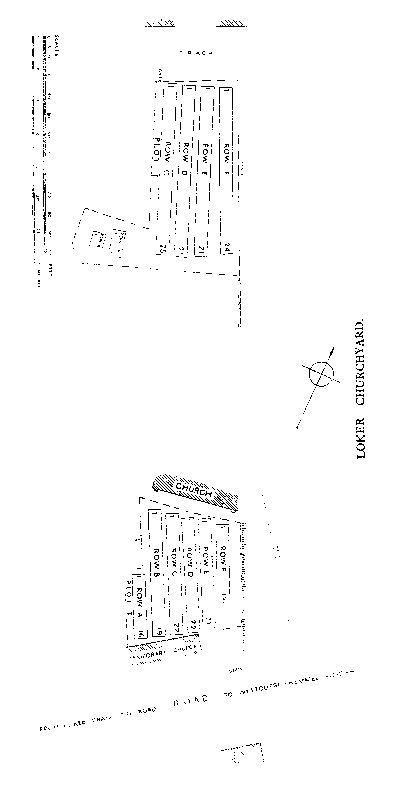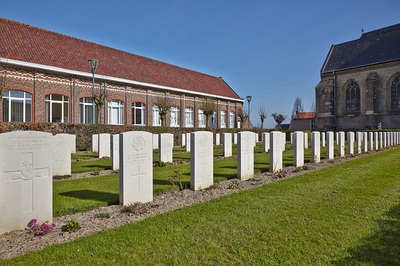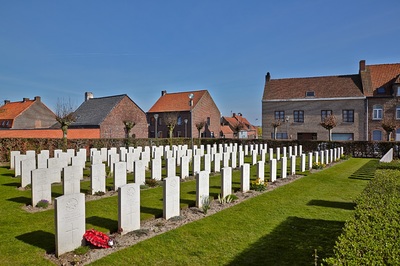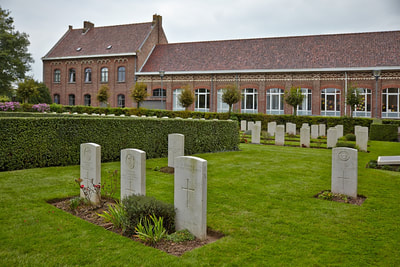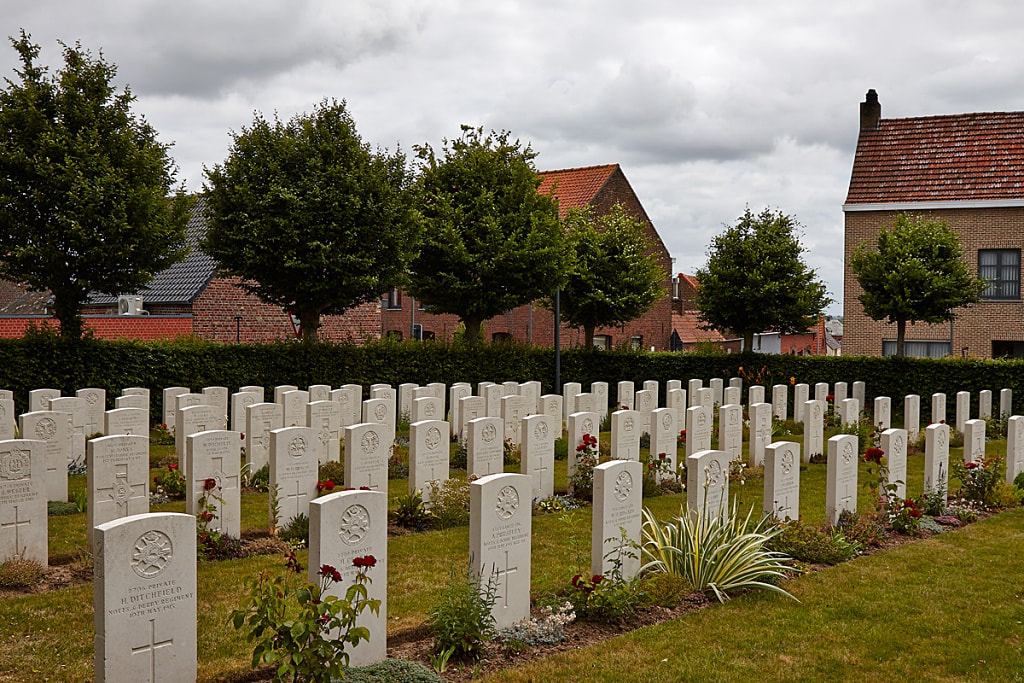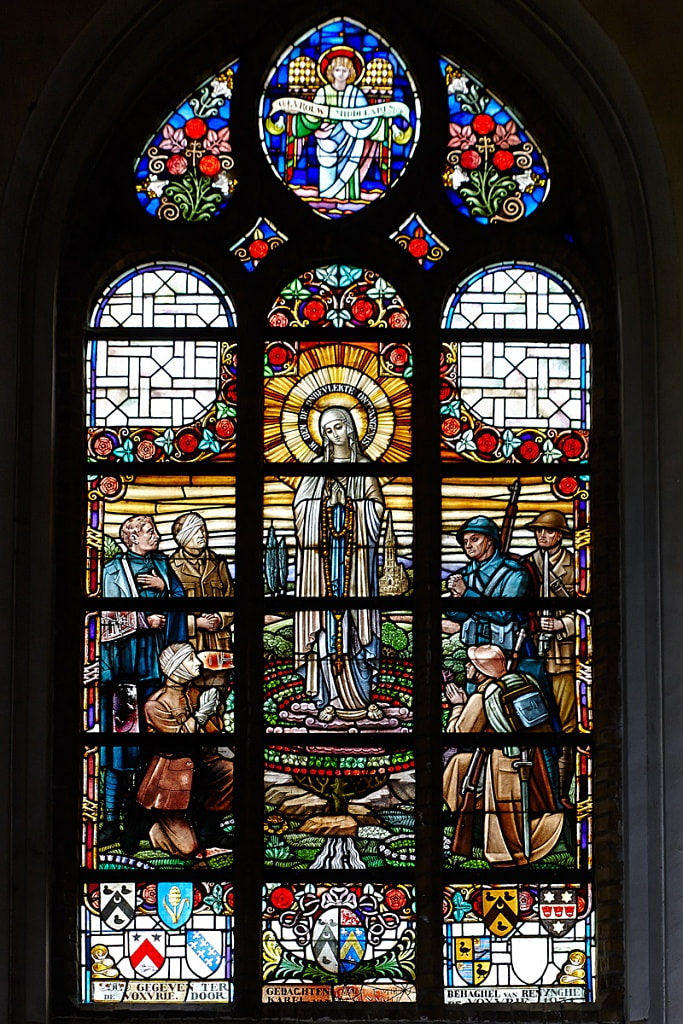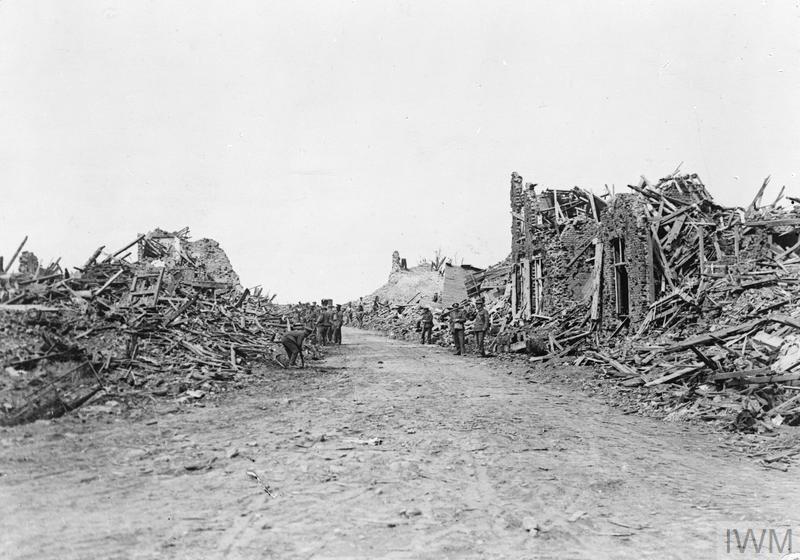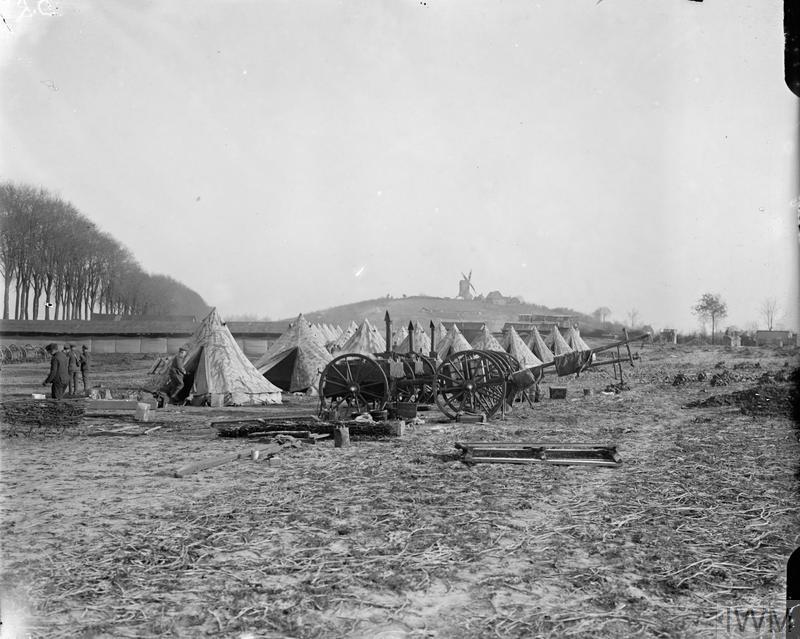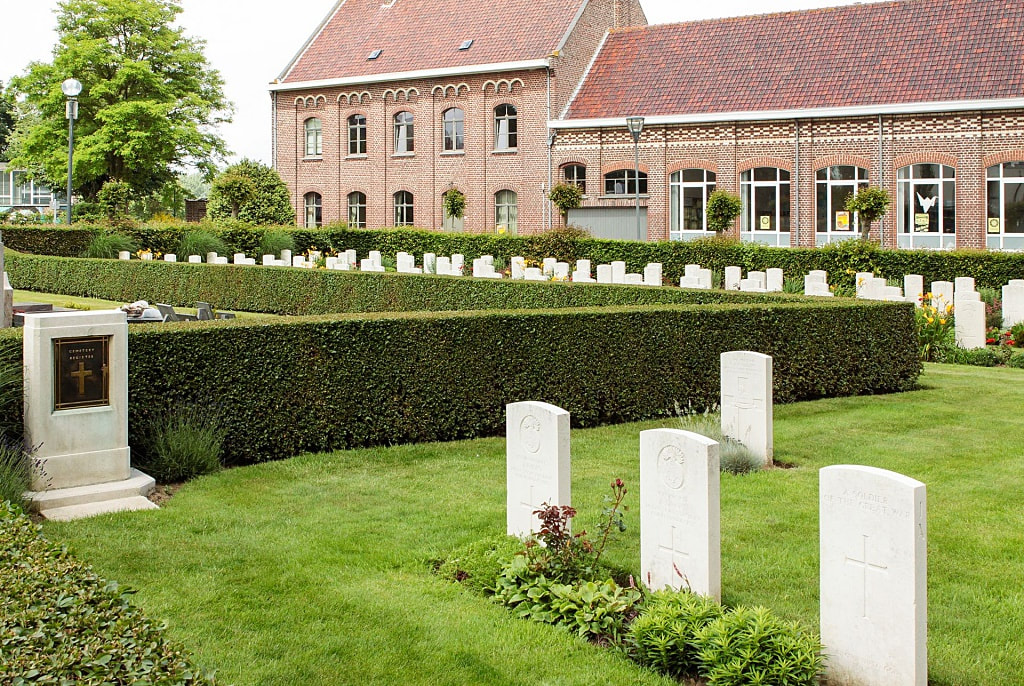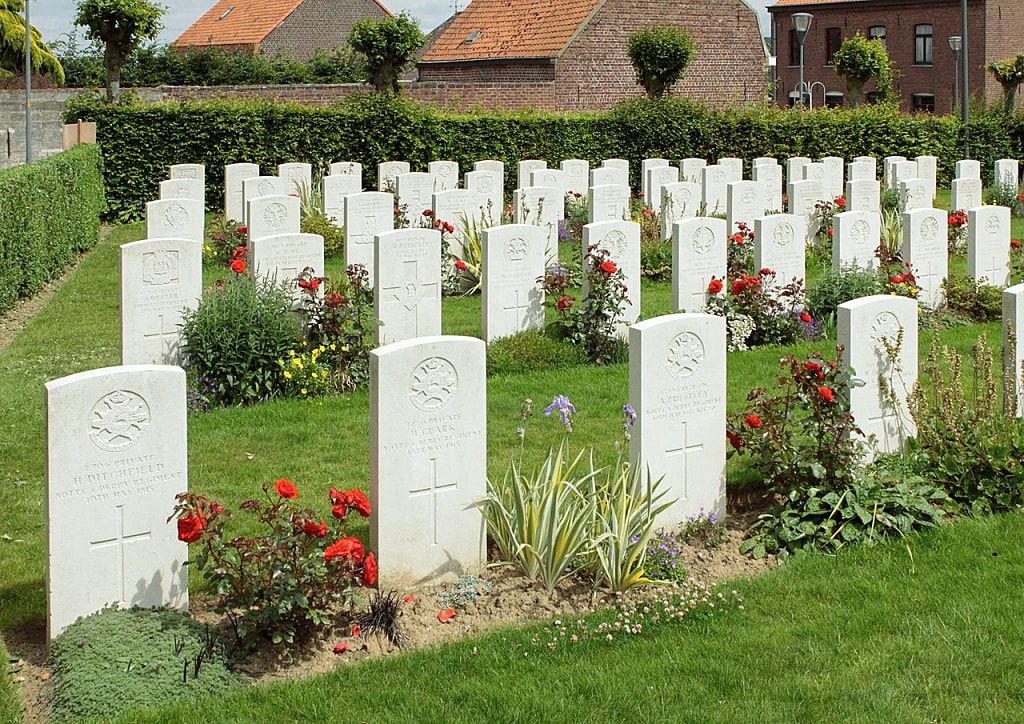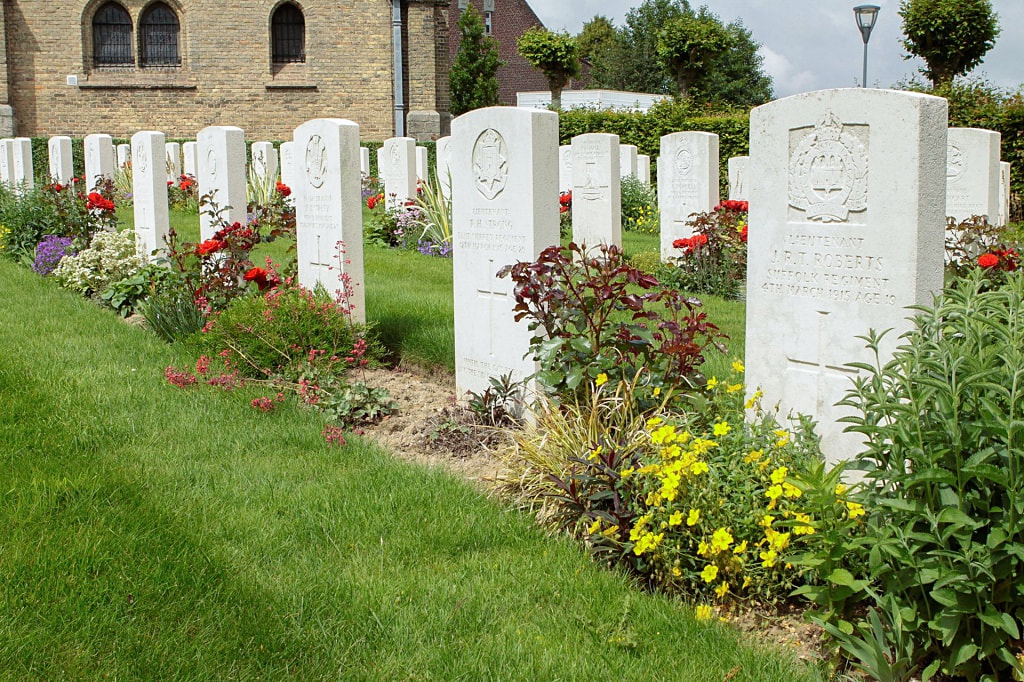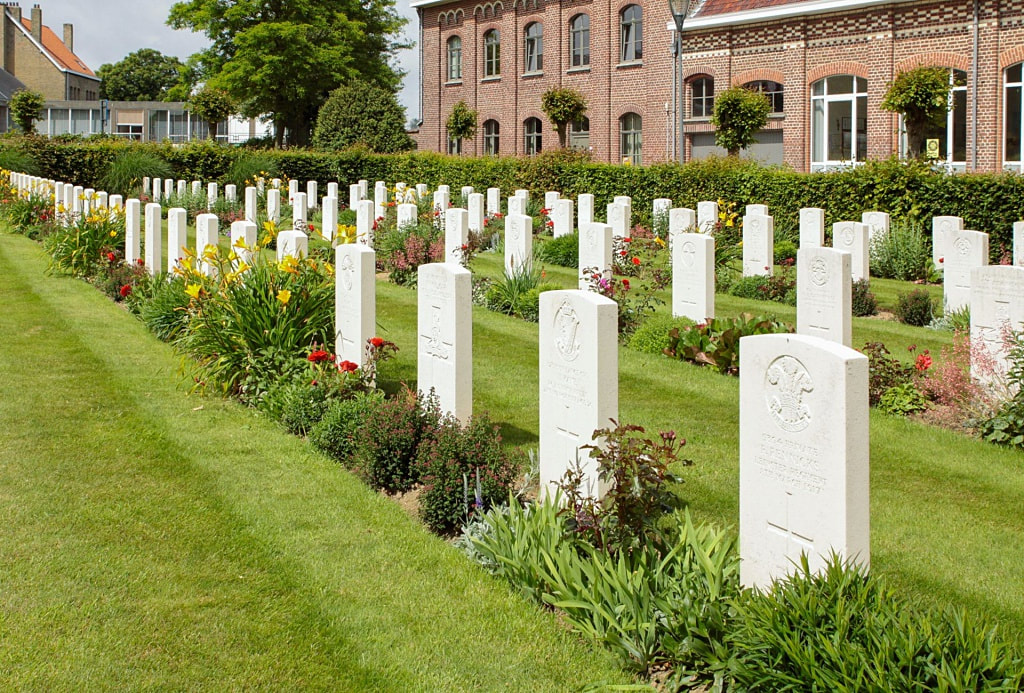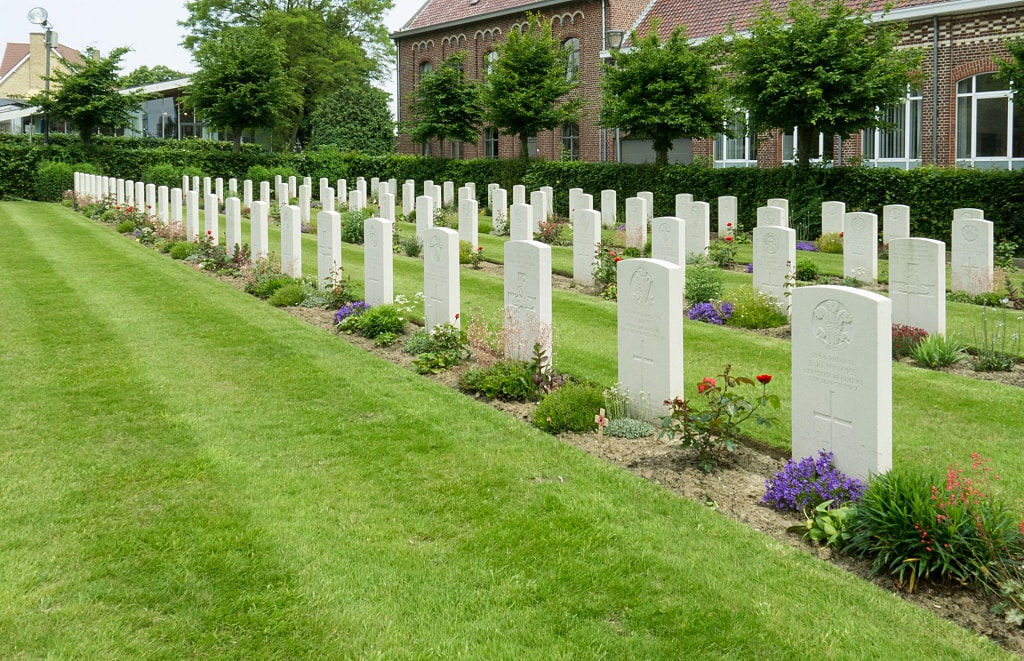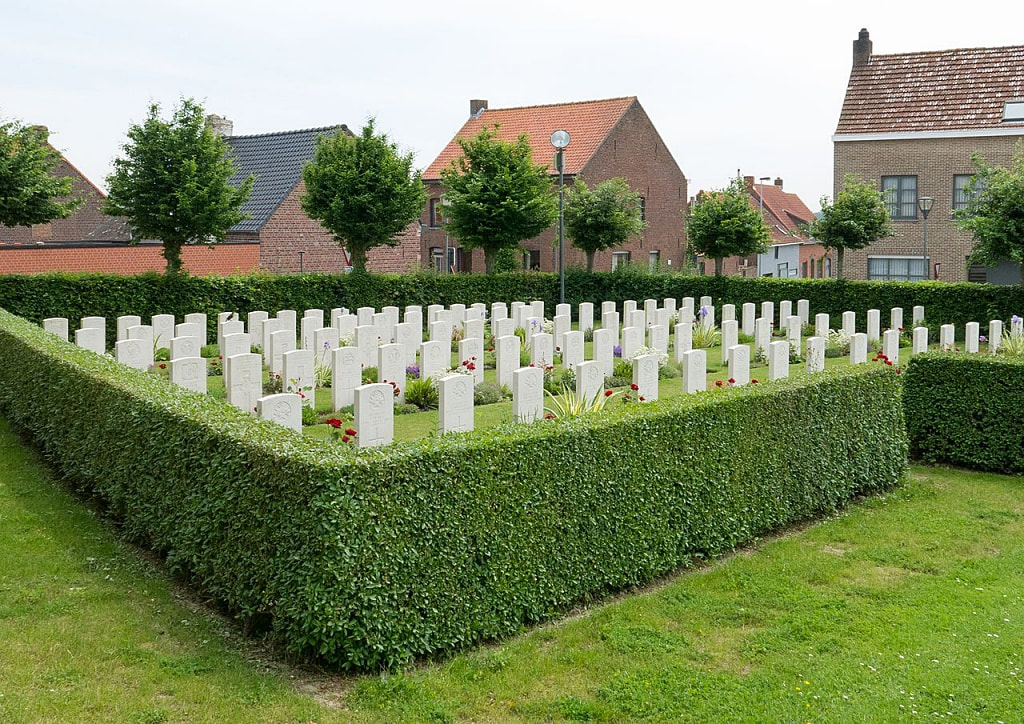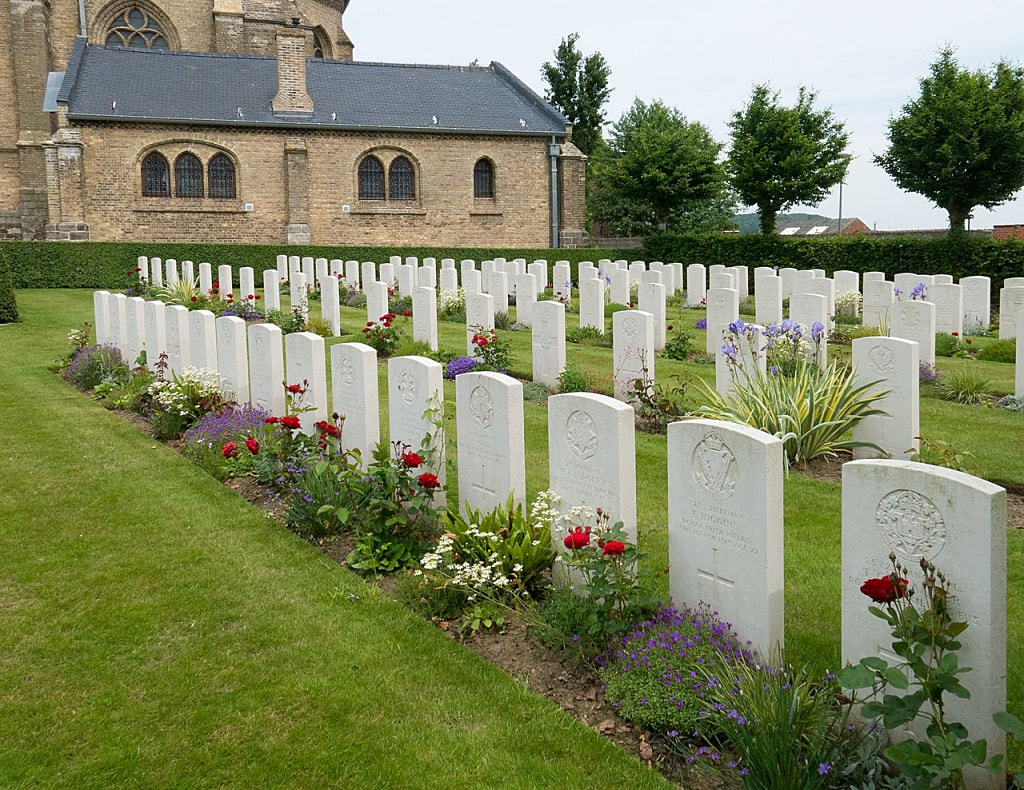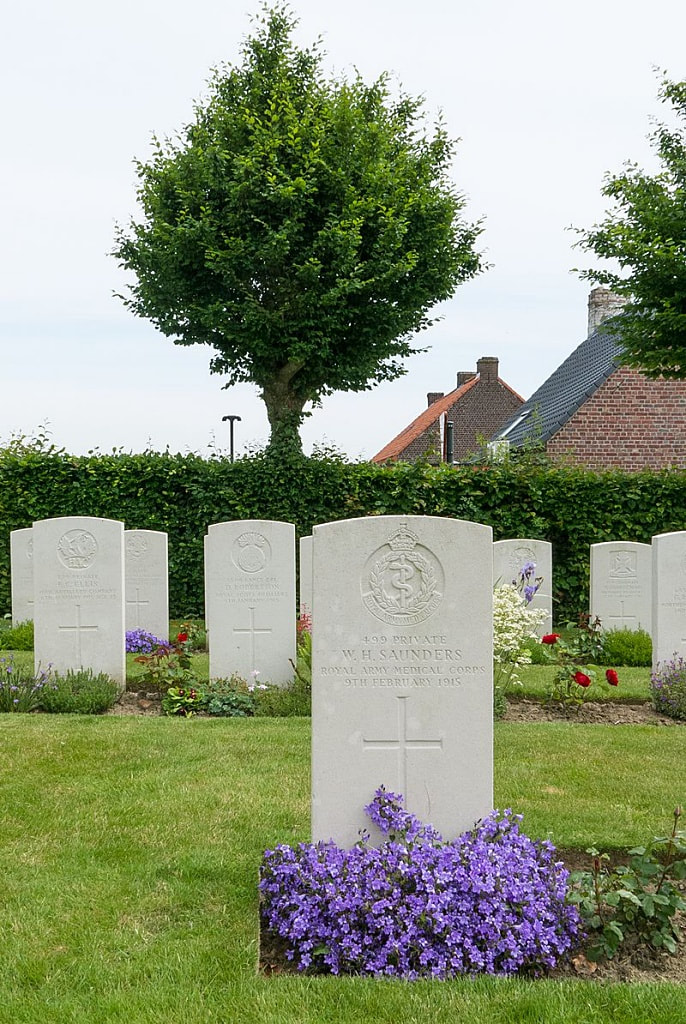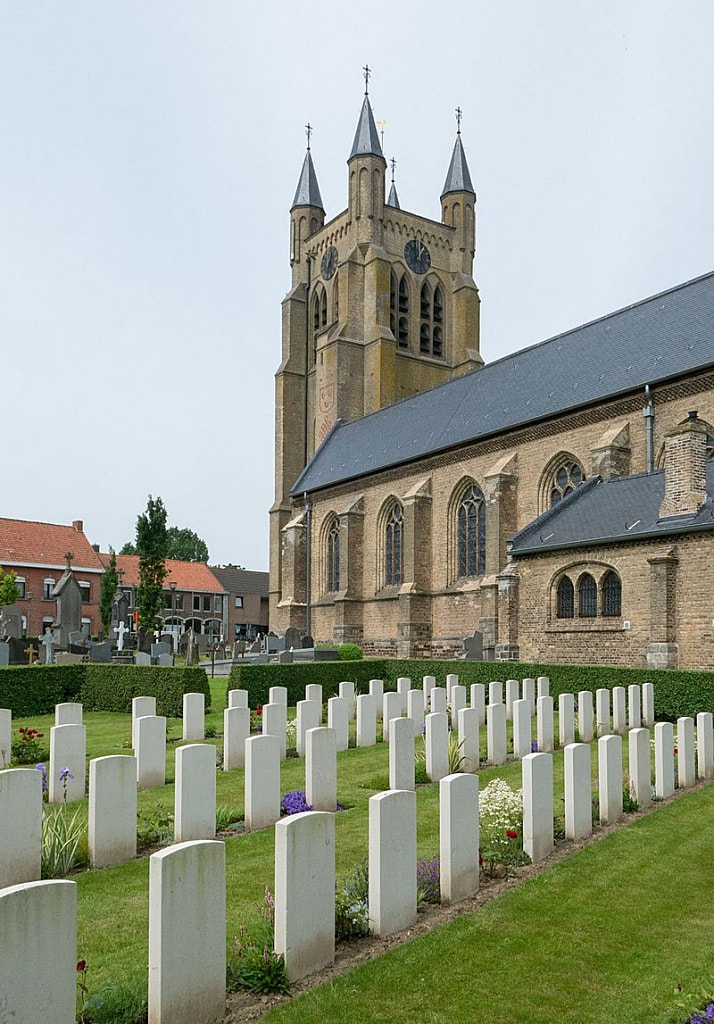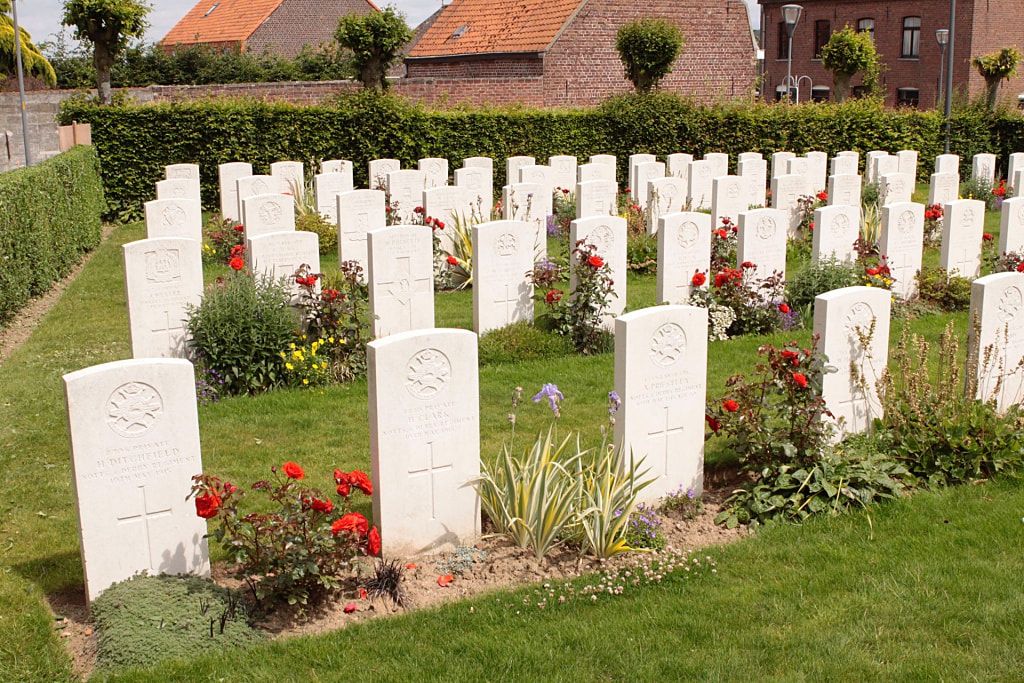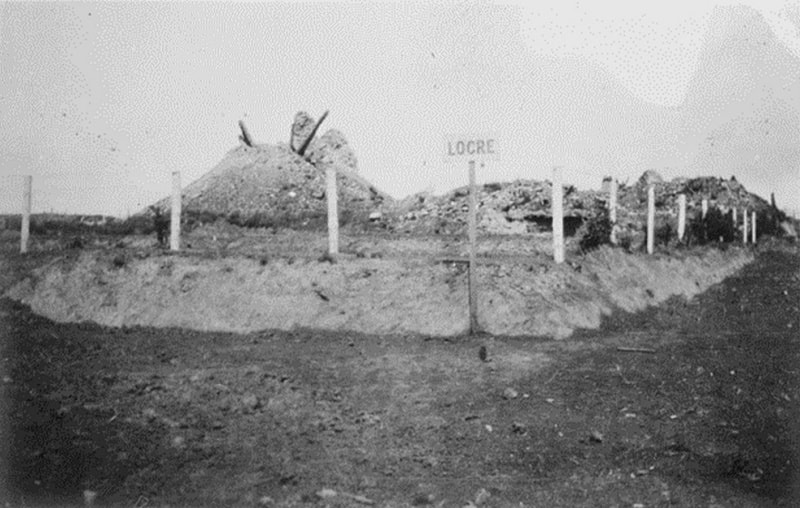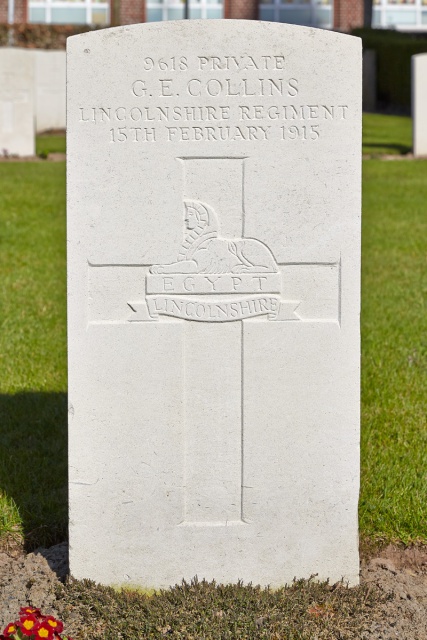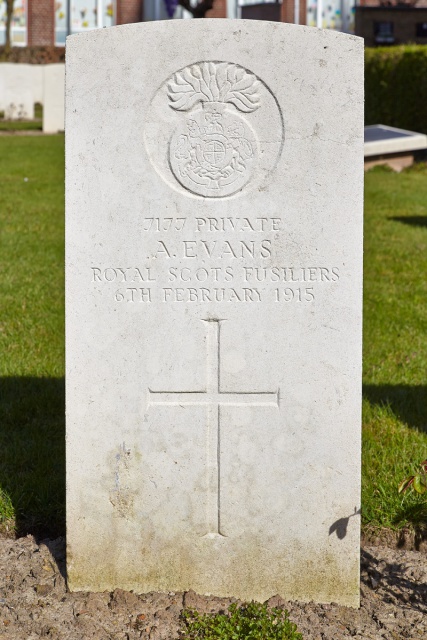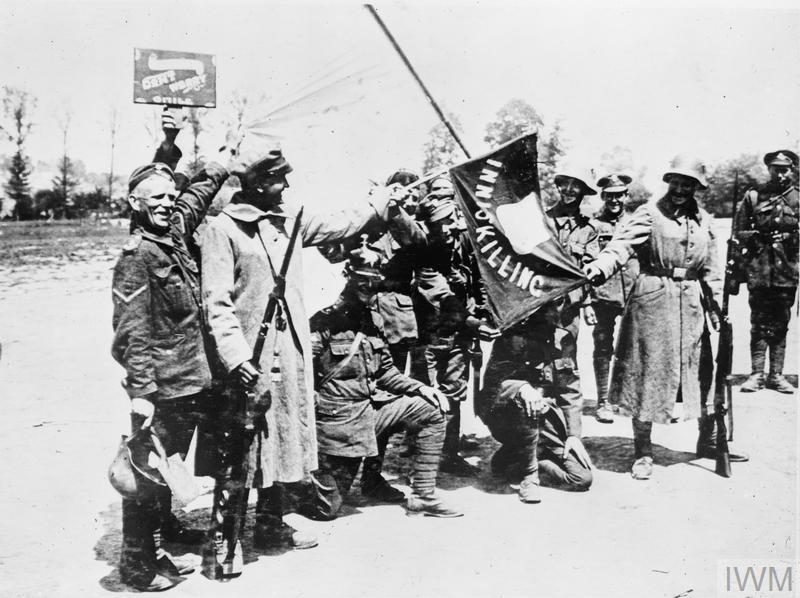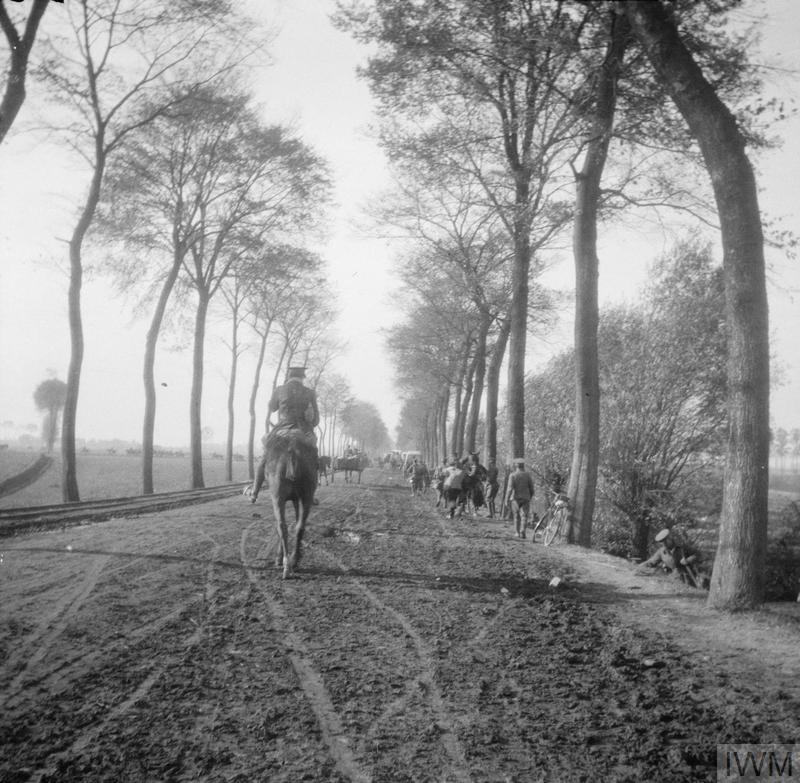LOKER CHURCHYARD
West-Vlaanderen
Belgium
GPS Coordinates: Latitude: 50.78224 Longitude: 2.77192
Location Information
Loker (formerly Locre) Churchyard is located 11.5 Kms south-west of Ieper town centre on the Dikkebusseweg (N375).
From Ieper town centre the Dikkebusseweg is reached via Elverdingsestraat, straight over a roundabout onto J.Capronstraat (for 30 metres), then left along M.Fochlaan. Immediately after the train station, the first right hand turning is the Dikkebusseweg.
On passing through the village of Dikkebus the road continues for 6 kilometres to the village of Loker. The church and churchyard are located at the side of the road in the village of Loker itself.
Visiting Information
Wheelchair access possible via main entrance.
Historical Information
Locre (now Loker) was in Allied hands during the greater part of the war, and field ambulances were stationed in the Convent of St. Antoine. The village changed hands several times between 25 and 30 April 1918, when it was recaptured by the French. The hospice, or convent, was the scene of severe fighting on 20 May, but was not retaken until first week in July.
Loker Churchyard was used by field ambulances and fighting units from December 1914 to June 1917, and it contains two Commonwealth plots. One grave was brought in after the Armistice from LOCRE FRENCH CEMETERY No.4.
The churchyard contains 215 Commonwealth burials of the First World War.
Total Burials: 215.
Identified Casualties: United Kingdom 182, Canada 31. Total 213.
Images in this gallery © Geerhard Joos
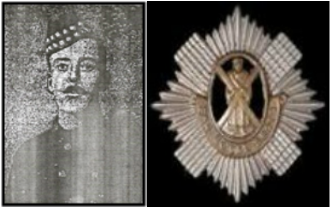
4139 Private
William Docherty
2nd Bn., Royal Scots
5th March 1915.
Plot II. C. 3.
William, born 6th August 1879 in Maryhill, Glasgow, was the second son of Mr. & Mrs. William Docherty, 22 Bartonhall Road, Waterloo. He married Margaret McAnulla on 3rd January 1911. They had a daughter, Margaret, born 14th April 1912 and a son William. He was a moulder to trade and for some time was employed in the Coltness Iron Works as an iron moulder. Prior to the outbreak of war he had moved with his wife and children to McDougall Street, Parkhead, Glasgow. He was very well known in this locality and many of the young men from St. Ignatius R.C. were indebted to him for instruction in physical drill.
Private Docherty went through the Boer War in the ranks of the Royal Scots without receiving a scratch and re-joined his old regiment on 12th September 1914. He went to France in December 1914 and was in the thick of the fighting from then. William was noted as being 5’ 6” tall, weighing 140lbs, 38” chest, blue eyes and brown hair. He was Roman Catholic by faith.
Early in the morning of the 5th March 1915 he was leaving the trenches to proceed to his billet for a well-earned rest when he was struck by a bursting shrapnel shell and never regained consciousness.
Private Docherty is buried in Loker Churchyard, Belgium, Grave II.C.3. and commemorated on Waterloo Memorial Hall and both Waterloo and Newmains War Memorials.
Picture and information courtesy of Alistair Allan of Wishaw in Scotland
William Docherty
2nd Bn., Royal Scots
5th March 1915.
Plot II. C. 3.
William, born 6th August 1879 in Maryhill, Glasgow, was the second son of Mr. & Mrs. William Docherty, 22 Bartonhall Road, Waterloo. He married Margaret McAnulla on 3rd January 1911. They had a daughter, Margaret, born 14th April 1912 and a son William. He was a moulder to trade and for some time was employed in the Coltness Iron Works as an iron moulder. Prior to the outbreak of war he had moved with his wife and children to McDougall Street, Parkhead, Glasgow. He was very well known in this locality and many of the young men from St. Ignatius R.C. were indebted to him for instruction in physical drill.
Private Docherty went through the Boer War in the ranks of the Royal Scots without receiving a scratch and re-joined his old regiment on 12th September 1914. He went to France in December 1914 and was in the thick of the fighting from then. William was noted as being 5’ 6” tall, weighing 140lbs, 38” chest, blue eyes and brown hair. He was Roman Catholic by faith.
Early in the morning of the 5th March 1915 he was leaving the trenches to proceed to his billet for a well-earned rest when he was struck by a bursting shrapnel shell and never regained consciousness.
Private Docherty is buried in Loker Churchyard, Belgium, Grave II.C.3. and commemorated on Waterloo Memorial Hall and both Waterloo and Newmains War Memorials.
Picture and information courtesy of Alistair Allan of Wishaw in Scotland

Second Lieutenant
James Rhoderic Trethowan Roberts
2nd Bn. Suffolk Regiment
3rd March 1915, aged 19.
Plot 2. C. 21.
Son of William and Adelaide Nodder Roberts, of 18, King's Avenue, Clapham Park, London.
Killed close to his trench when shot by a sniper.
Pictures courtesy of Bill Norton
James Rhoderic Trethowan Roberts
2nd Bn. Suffolk Regiment
3rd March 1915, aged 19.
Plot 2. C. 21.
Son of William and Adelaide Nodder Roberts, of 18, King's Avenue, Clapham Park, London.
Killed close to his trench when shot by a sniper.
Pictures courtesy of Bill Norton
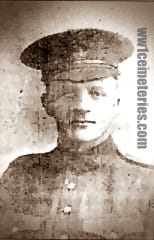
74122 Private
Frederick Robert Smith
"D" Coy. 28th Bn. Canadian Infantry
28th September 1915, aged 30.
Plot I. F. 1.
Son of Robert Smith, of Portrush, Co. Antrim, Ireland.
Frederick Robert Smith
"D" Coy. 28th Bn. Canadian Infantry
28th September 1915, aged 30.
Plot I. F. 1.
Son of Robert Smith, of Portrush, Co. Antrim, Ireland.
Images in this gallery © Werner Van Caneghem
Shot at Dawn
15576 Private Joseph Byers,1st Bn. Royal Scots Fusiliers, executed for attempted desertion 6th February 1915, aged 19. Plot 1. A. 1.
He arrived in France on 3 Dec 1914. On 8 Jan 1915, when serving near Kemmel, he fell out from a working party in order to use the latrines, but did not return. Byers was next seen on 18 Jan between Ypres & Poperinghe & arrested.
At trial on 30 Jan, Byers — unrepresented — pleaded Guilty & made no plea in mitigation.
In only one other case was a man executed after a Guilty plea (Downey in Salonika in Dec 1915). (Corns, pp.293-294)
7177 Private Andrew Evans, 1st Bn. Royal Scots Fusiliers, executed for attempted desertion, 6th February 1915. Plot 1. A. 2.
Probably a Reservist, he was absent from parade, prior to his battalion proceeding to the front. Evans was tried on the same day as Pte Byers (though separately), & buried alongside him. (Putkowski, p 31; Corns, p 294)
9618 Private George Ernest Collins, 1st Bn Lincolnshire Regiment, executed for desertion 15th February 1915, aged 20. Plot 1. B. 3. Son of James and Charlotte Collins, of 2, West Dock St., Hessle Rd., Hull. Aged 20, he was undefended at trial. (Putkowski, p 34)
15576 Private Joseph Byers,1st Bn. Royal Scots Fusiliers, executed for attempted desertion 6th February 1915, aged 19. Plot 1. A. 1.
He arrived in France on 3 Dec 1914. On 8 Jan 1915, when serving near Kemmel, he fell out from a working party in order to use the latrines, but did not return. Byers was next seen on 18 Jan between Ypres & Poperinghe & arrested.
At trial on 30 Jan, Byers — unrepresented — pleaded Guilty & made no plea in mitigation.
In only one other case was a man executed after a Guilty plea (Downey in Salonika in Dec 1915). (Corns, pp.293-294)
7177 Private Andrew Evans, 1st Bn. Royal Scots Fusiliers, executed for attempted desertion, 6th February 1915. Plot 1. A. 2.
Probably a Reservist, he was absent from parade, prior to his battalion proceeding to the front. Evans was tried on the same day as Pte Byers (though separately), & buried alongside him. (Putkowski, p 31; Corns, p 294)
9618 Private George Ernest Collins, 1st Bn Lincolnshire Regiment, executed for desertion 15th February 1915, aged 20. Plot 1. B. 3. Son of James and Charlotte Collins, of 2, West Dock St., Hessle Rd., Hull. Aged 20, he was undefended at trial. (Putkowski, p 34)

